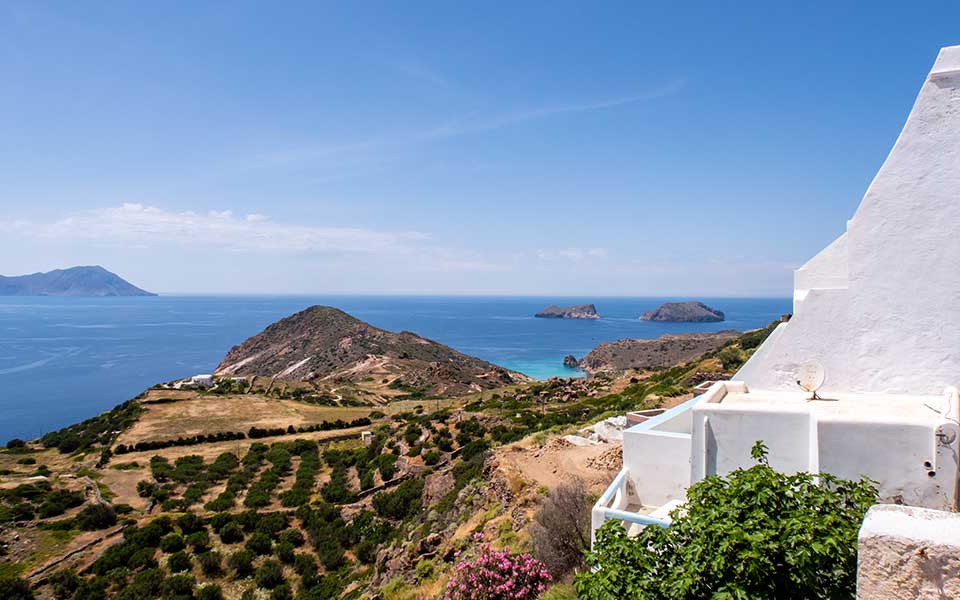Don’t judge a book by its cover, but do choose an island, at least every now and then, on the basis of the wines and the spirits it produces, because the best way to get the flavor of a place is often, simply put, through its flavors. And when the islands in question are Greek, the traveler is almost duty-bound to check out the local libations, one tempting glass at time.
Santorini’s Assyrtiko is probably the most famous of the Greek island grapes, but did you know about Samos’s seductive “vin doux,” too? Some might find it odd that so little is written about the wines of Greece; after all, the locals of old were reveling in Dionysus’s honor long before vineyards graced the hillsides of Burgundy or Tuscany. Here we are, then, to help right this wrong, with our Greek island picks “by the glass.”
So, let the pouring begin (in moderation, of course), and let’s start, naturally, with Santorini.
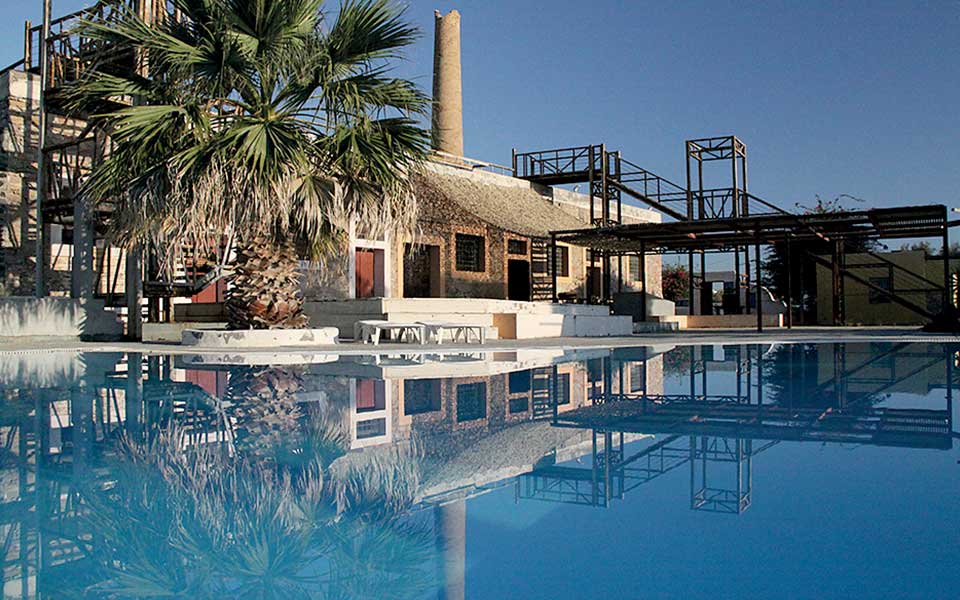
Santorini’s indigenous white wine grape, Assyrtiko, thrives in the unique ecosystem of the island, an environment where the most remarkable feature is the soil itself, rich in volcanic ash and very porous. This means that, even though there isn’t much rainfall on Santorini, the soil is capable of trapping humidity from dew and even moisture from sea breezes to nurture the vines. The yellow-gold grapes also get a helping hand from the strong meltemi winds that help trigger a slower ripening process. Another of the local “great whites” is the fragrant Aidani variety (also called Aidani Aspro).
Santorini’s special terroir produces some superior wines but, given the age of the vines and the hydric stress, the annual yields are characteristically quite low; still, and perhaps surprisingly, there are nearly 2,000 acres of vineyards on the small island.
There are many fine winemakers on the island, among which are Estate Argyros, Artemis Karamolegos Winery, Anhydrous Winery , Gavalas, Gaia, Vassaltis Vineyards, Hatzidakis, and Sigalas.
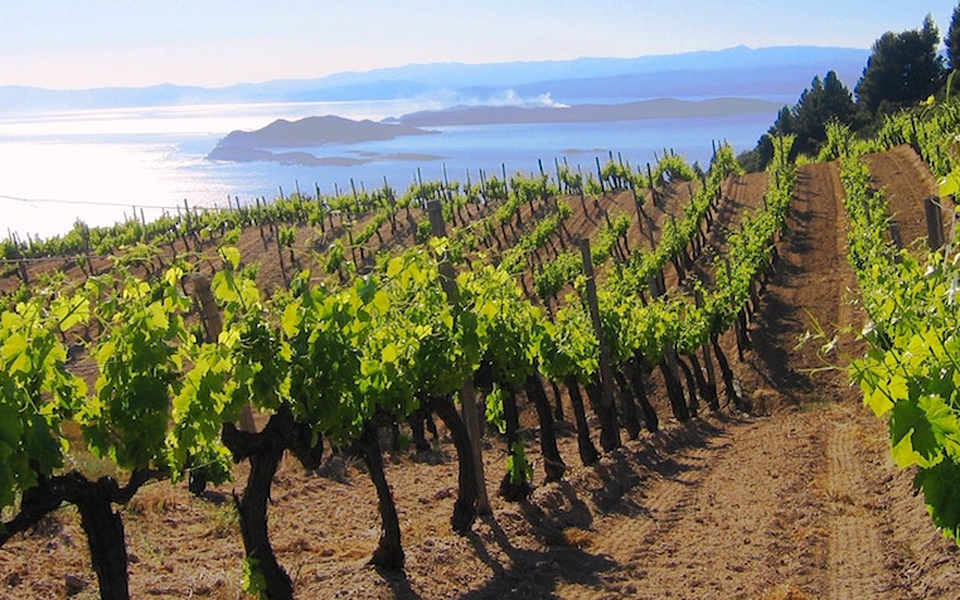
As one of the major Ionian islands, Kefalonia is synonymous with green scenery and beaches with delectably electric blue waters. But there’s more to Kefalonian lusciousness than that; there’s homegrown wine, too. The renowned Robola grapes of Kefalonia, grown in medium-altitude vineyards, create a crisp white wine with an orange-blossom nose, according to the island’s Gentilini Winery & Vineyards.
Mavrodaphne grapes, on the other hand, produce a dark fruity red wine with notes of wild mint and licorice. While this variety has been used for years to create sweet wines, the excellence of dry red wines made from this variety shows its true range. Don’t forget to stop by some of the local wineries; the winemakers themselves are often on hand to welcome visitors.
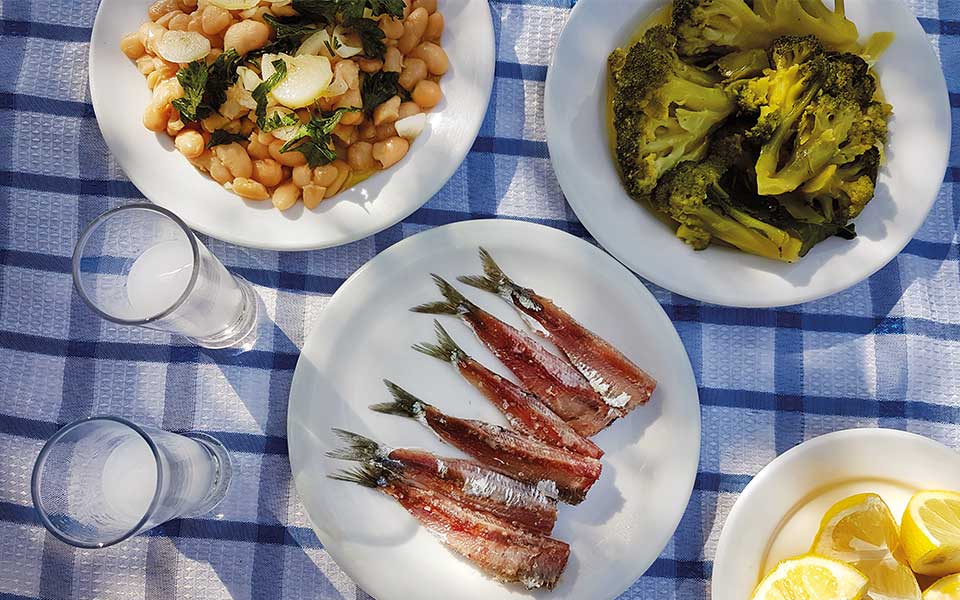
© Achileas Kiachagias
The signature libation of the island of Lesvos is definitely ouzo, the clear anise-flavored aperitif that goes cloudy white when poured over ice cubes or mixed with water and that might make you a bit cloudy-headed, too, if you drink too much at a sitting. It’s good, then, that Lesvos is a renowned culinary destination as well, meaning there’s plenty of meze, or appetizers, such as grilled octopus, olives and matured cheese, to go with your ouzo and help mitigate its intoxicating effects.
The best-known ouzo distilleries are along the south coast, in the town of Plomari, where there’s an ouzo festival every year.
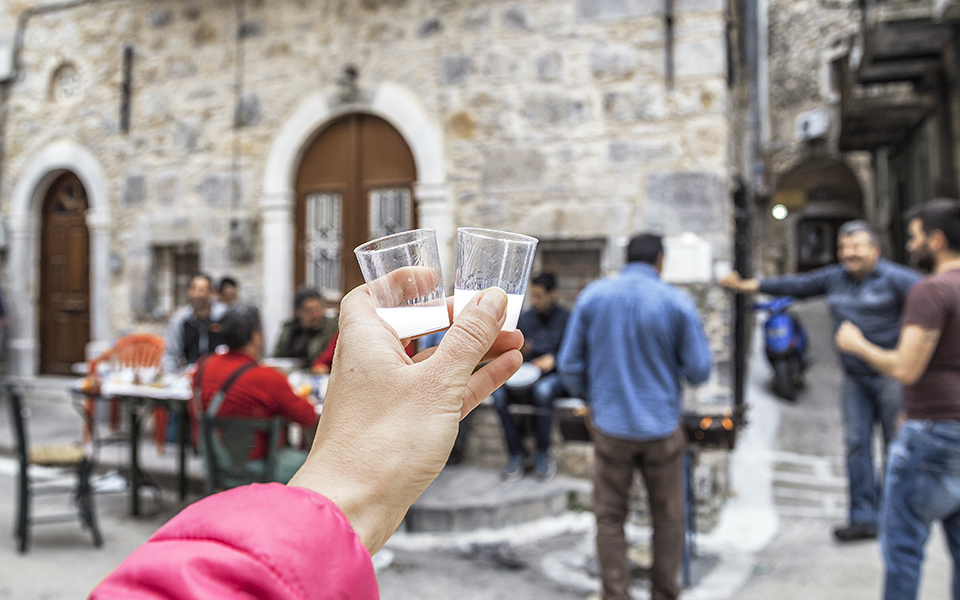
Chios, in the eastern Aegean, is renowned for mastiha, the resinous sap from the mastic trees that have grown on the island since antiquity. Mastiha is said to have therapeutic properties, and it can be found in many “Made-in-Chios” products. It’s probably best known, however, as the main flavor ingredient in mastiha liqueur, which has recently become one of Greece’s hottest it-ingredient for creative cocktails.
The trees grow in a southern region that’s home to the island’s “mastic villages,” where you’ll also find a fig liqueur known as souma. Be warned – this tipple has, at around 45 percent per volume, a much higher alcohol content than ouzo. Every August, local figs are dried on rooftops, to be boiled and distilled in October.
From the orangey sulfuric volcanic soil of Limnos, a large but lesser known Greek island in the north Aegean Sea, come wines made from the Muscat grape of Alexandria – actually of golden yellow hue, but still as lusciously tangy and floral as it sounds. The hilly western side of Limnos provides much of the terroir for the island’s noted sweet wines, but viticulture here goes a long way back and ancient authors such as Hesiod and even Aristotle mentioned a Limnian variety now called Limnio (and known locally as Kalambaki), which produces good dry red wines.
New wineries have opened here in the last decade, and the island is producing a range of very interesting dry reds from Muscat of Alexandria as well as from Limnio and other, less well known native varieties.
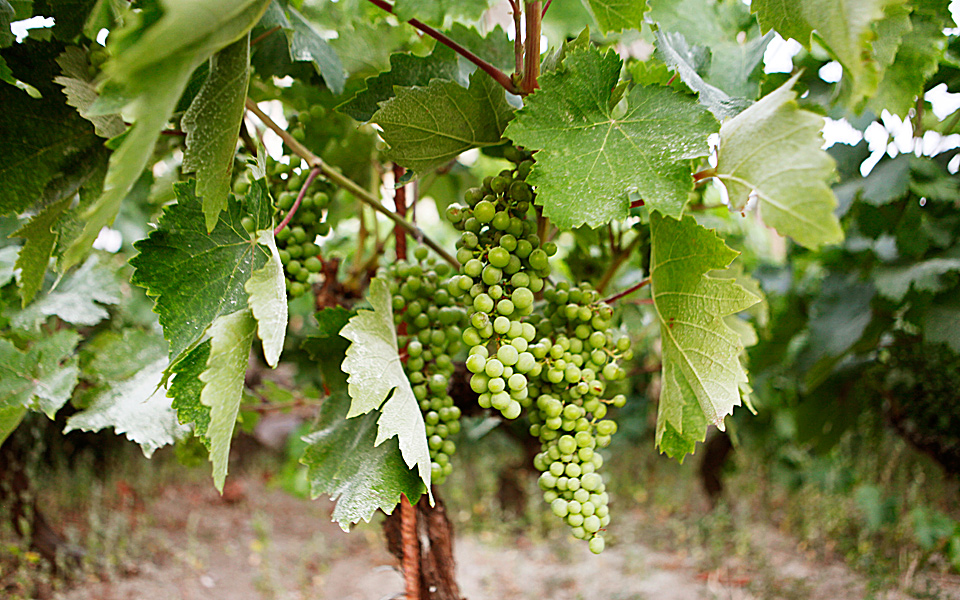
© Katerina Kampiti
Ikaria is an island famous for the longevity of its inhabitants – perhaps the good wine helps. Most famous of these is the Pramnian red, a wine once used in Dionysian rituals and even mentioned by Homer, who in the Iliad wrote that heroes would fortify themselves for battle by drinking this famously robust wine (the heroes’ version was mixed with barley and shredded goat cheese).
The Afianes Winery in the rugged western reaches of the island makes a number of intriguing wines, including their Icarus Black, a red dry wine, and Icarus Red, which will win you over with its “fruity and complex nose and aromas of watermelon, butter caramel and rose.” The island’s Karimalis Winery can organize wine tastings and cooking lessons, too.
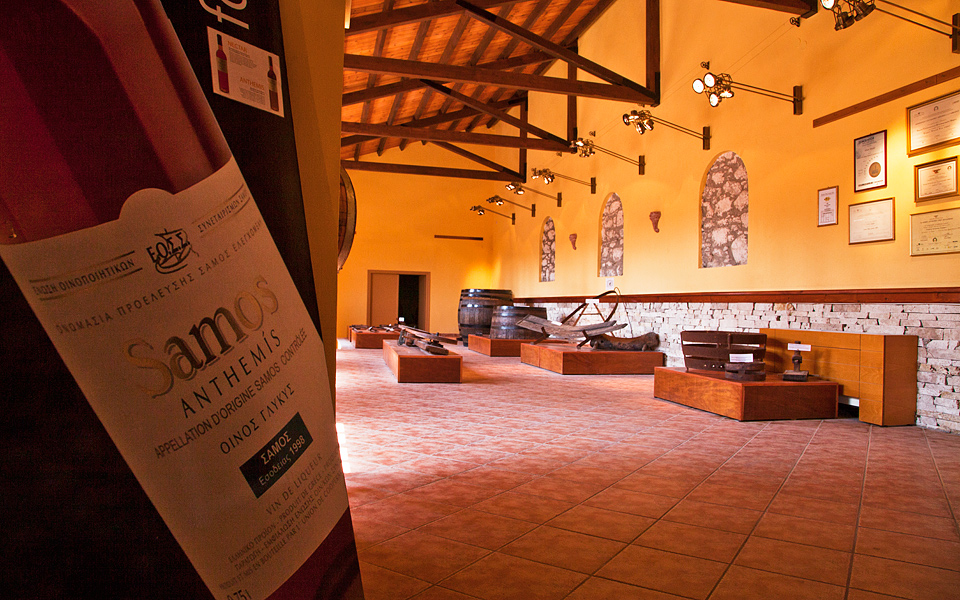
© Olga Charami
Nearly all of the vineyards on Samos are dedicated to white muscat production; this variety is used for a sweet dessert wine long renowned throughout the Mediterranean world and beyond. Most of the island’s vineyards are found in the northern part of the island, on narrow terraces that cling to seaside slopes. As in Santorini, the vines are cooled by the meltemi winds.
The famous Samos “vin doux” is the perfect finish to a mid-summer night’s traditional taverna feast. There are three main categories, based on the length of the aging period. Of late, individual wineries have opened alongside the island’s wine cooperative, and these newcomers are offering entirely new expressions of the white muscat variety.
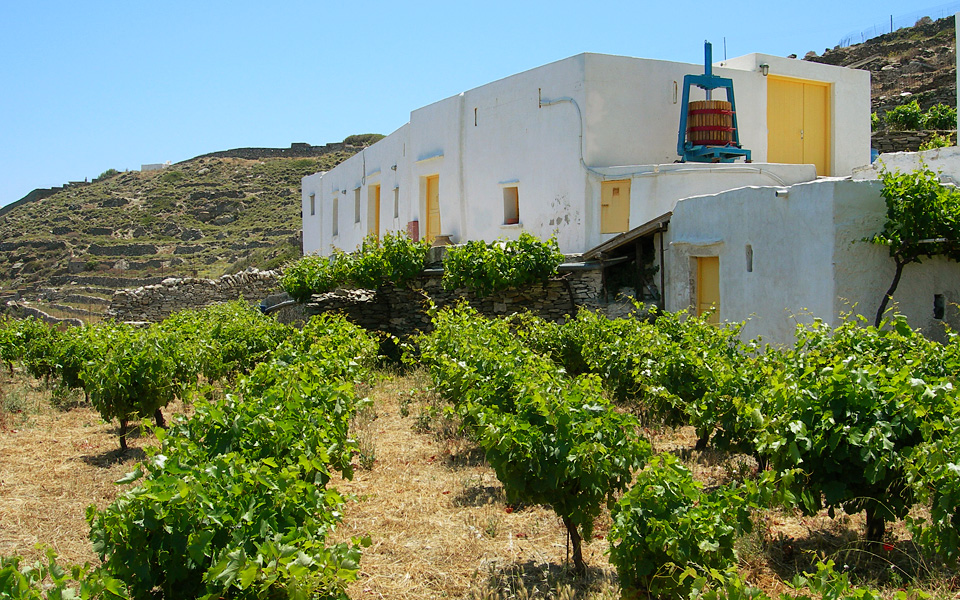
© Evelin Foskolou
Paros is prized for its great beaches and lively towns, but there’s bucolic scenery, too, concealing vineyards mainly consisting of vines that grow in the sandy-clay rich soils formed by the eroding slopes of Mt Profitis Elias. Most of what’s planted is either white Monemvasia or red Mandilaria grapes; the former yields dry whites while both are blended for a unique red wine. Aside from Santorini, Paros is the only Cycladic island with Protected Designation of Origin (PDO) wine.
Sifnos and Tinos are two Cycladic island renowned for their culinary traditions. On the former, Votsari Vineyards makes a tasty, organic red sun-dried wine as well as two white varietals – one from Assyrtiko and another from Savvatiano grapes. Meanwhile, Tinos is gaining ground on the Cycladic wine scene, with vineyards mainly in the center of the island, some marked by the presence of the famous Tinian volakes, or boulders. There’s Assyrtiko to be sure, but there are some surprises, too, such as the full-bodied white Malagouzia wine from Volacus Vineyards. You’ll also find great local wines at the T-Oinos Winery, too.
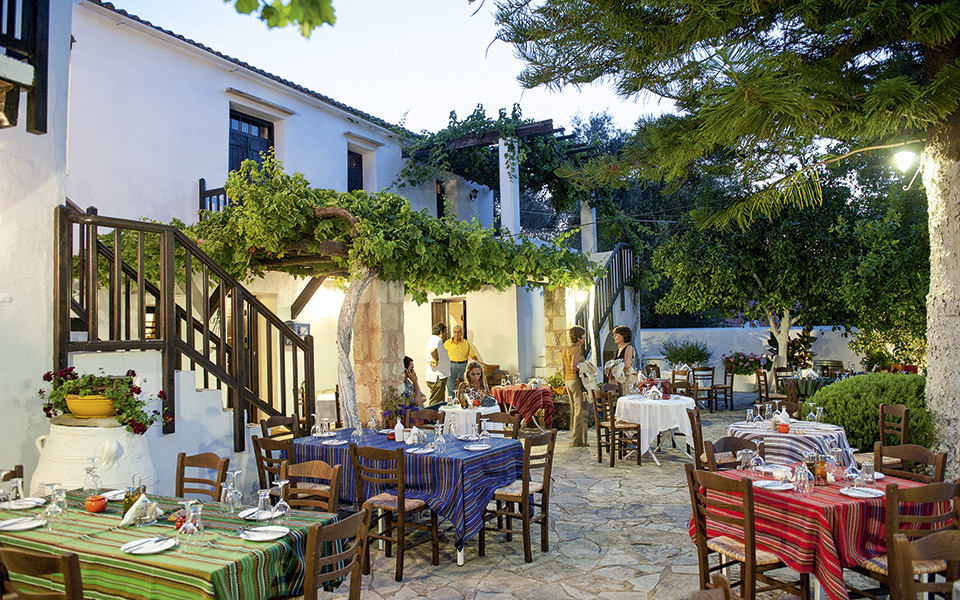
Crete is the largest Greek island, and probably the most agriculturally productive, too: 15 percent of Greece’s vineyards are located here. World-class wineries can be found from one end of the island to another, but the vinicultural epicenter of the island is in the prefecture of Heraklion. There, the Peza area vineyards are best known for whites made from Vilana grapes, while in the vineyards around Archanes, you’ll find red Kotsifali and Mandilaria grapes.
West of Archanes, on the northeastern slopes of Mt Ida, are the Daphnes Vineyards; here, red Liatiko grapes are used in superb sweet wines – these grapes ripen as early as July (liatiko comes from the Greek word for July). This variety, for years overlooked or brought into service only to add color to blends, is now recognized as an interesting grape in its own right.
Further west, in the more humid prefecture of Hania, Romeiko grapes rule the roost, producing a dry red wine that is, for the most part, only available in Crete. Visitors to this area should head to Manousakis Winery for a full gastronomic experience that includes local and international wine varieties grown in the region paired with local delicacies from the traditional cuisine of Crete.

